Instagram Logo Design: History & Evolution
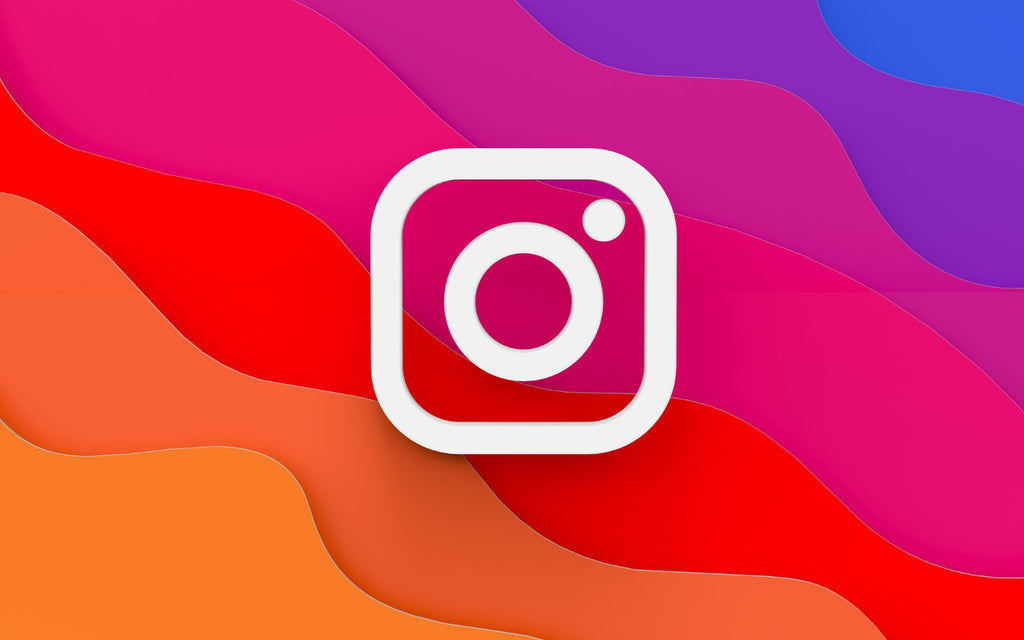
Image Courtesy: Instagram
The Instagram logo design is more than just a symbol; it's a reflection of creativity, change, and the ever-evolving world of social media. Whether you're a seasoned graphic designer or just someone intrigued by aesthetics, the journey of the Instagram logo design might pique your curiosity. Additionally, exploring the evolution of the logo can provide insights into how to attract and retain an Instagram follower base.This emblematic image has gone through several transformations since its inception, each change resonating with the platform's growth and cultural shifts. From its classic Polaroid-inspired design to the sleek, modern gradient we recognize today, Instagram's logo design narrates a story of innovation and trends.
In this article, we'll dive deep into the history and evolution of Instagram logo design, exploring the creative process behind each iteration and understanding what it takes to design a logo for one of the world's most popular social media platforms. So grab a cup of coffee, and let's embark on this colorful ride through the dynamic world of Instagram logo design. Whether you're looking for inspiration for your next project or just love design history, this casual stroll through the virtual gallery of Instagram's visual identity is sure to fascinate.
Instagram Logo Design History
2010
In 2010, the world of social media was introduced to a fresh visual emblem that would soon become iconic: the original Instagram logo design. Conceived by the company's co-founder, Kevin Systrom, this unique design captured the essence of what Instagram was all about at the time. The knock-off Polaroid camera, adorned with a vibrant rainbow stripe, was more than just an image; it was a symbol of the application's core functionality of taking and sharing photos, along with applying distinct filters.
This Instagram logo design wasn't just about aesthetics; it was a nod to the retro feeling, reflecting the original idea behind the application. The light milky shade of the camera body was not only unique but made the logo stand out among the burgeoning list of social media competitors. Though this badge was short-lived, staying in use for just a few months, it marked a great beginning to the iconic cam logo era.
To many graphic designers, the 2010 Instagram logo design is a classic example of how to encapsulate a brand's identity and functionality into a single visual element. Its natural look and feel set the stage for what was to become a continually evolving and influential presence in the world of logo design.
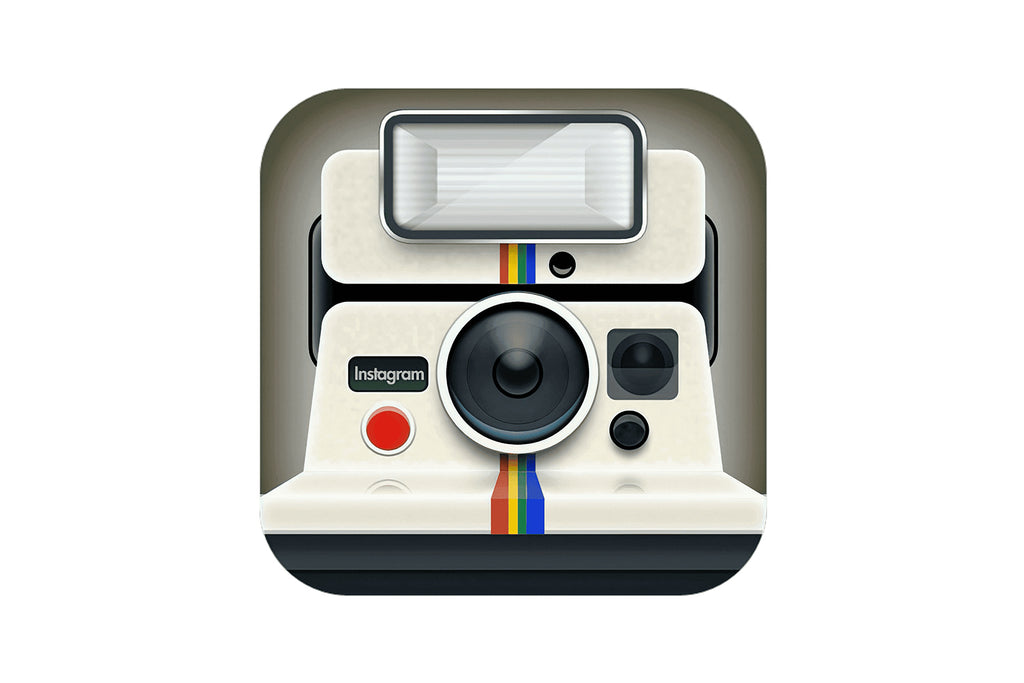
Image Courtesy: Instagram
2010 - 2011
The story of Instagram logo design took an exciting turn later in 2010 when Kevin Systrom decided it was time to bring in professional expertise. Enter Cole Rise, a talented designer and photographer, who was tasked with refining the logo to resonate more with the platform's burgeoning popularity.
Inspired by the classic Bell & Howell camera from the 1950s, Rise maintained the original color palette of beige and brown but added depth by intensifying the shades of the camera body and details. This revamped Instagram logo design wasn't just a rehash; it was a sophisticated transformation that highlighted the brand's evolution.
The new badge was simpler, more memorable, and a testament to the power of minimalist shapes and accents in modern design. The upper left corner of the camera featured a vertically oriented rainbow flag, and the bold "INST" uppercase lettering in sans-serif sat beneath it, grounding the design with simplicity and style.
This phase of Instagram logo design is a favorite among graphic designers for its ability to bridge nostalgia with contemporary design principles. It's a vivid reminder that sometimes, subtle changes can make a significant impact, turning a functional logo into an enduring symbol of a brand's identity.
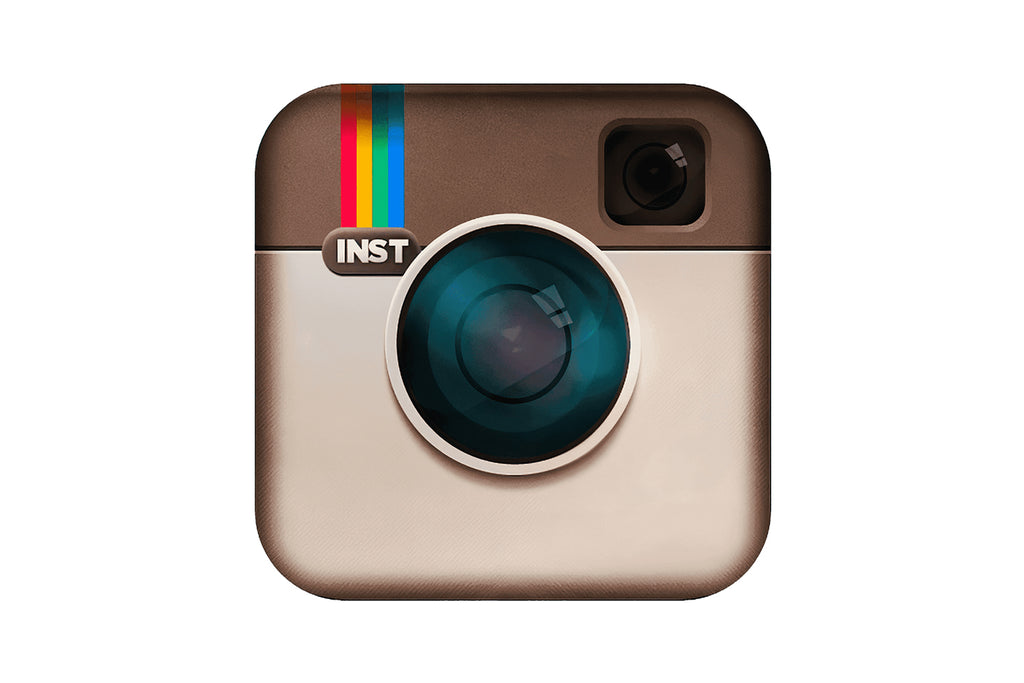
Image Courtesy: Instagram
2011 - 2016
The period from 2011 to 2016 marked a subtle but meaningful shift in the Instagram logo design. While the overall look remained consistent with its predecessor, this emblem made its debut on Instagram v2.0 with key refinements that gave it a fresh flair.
The introduction of a leathery texture to the upper part of the camera on the badge lent a tactile feel, while the lens received more gradient gloss, making it look more natural and vivid. These elements were enhanced by more contrasting gradients on the camera body, infusing the image with vitality and a touch of realism that made it stand out.
Perhaps one of the most noticeable changes was in the typography. The uppercase sans-serif "INST" under the now wider and more visible rainbow was replaced with a bold serif "Insta," capitalizing only the first letter. This nuanced alteration in the Instagram logo design added a touch of sophistication without losing its approachable charm.
For many graphic designers, this phase in the Instagram logo design evolution is a lesson in the importance of subtle changes. It emphasizes that fine-tuning details while retaining the essence of the brand can result in a memorable logo that resonates with its audience. It's about keeping the roots while growing with the times, a philosophy that has defined Instagram's visual journey.
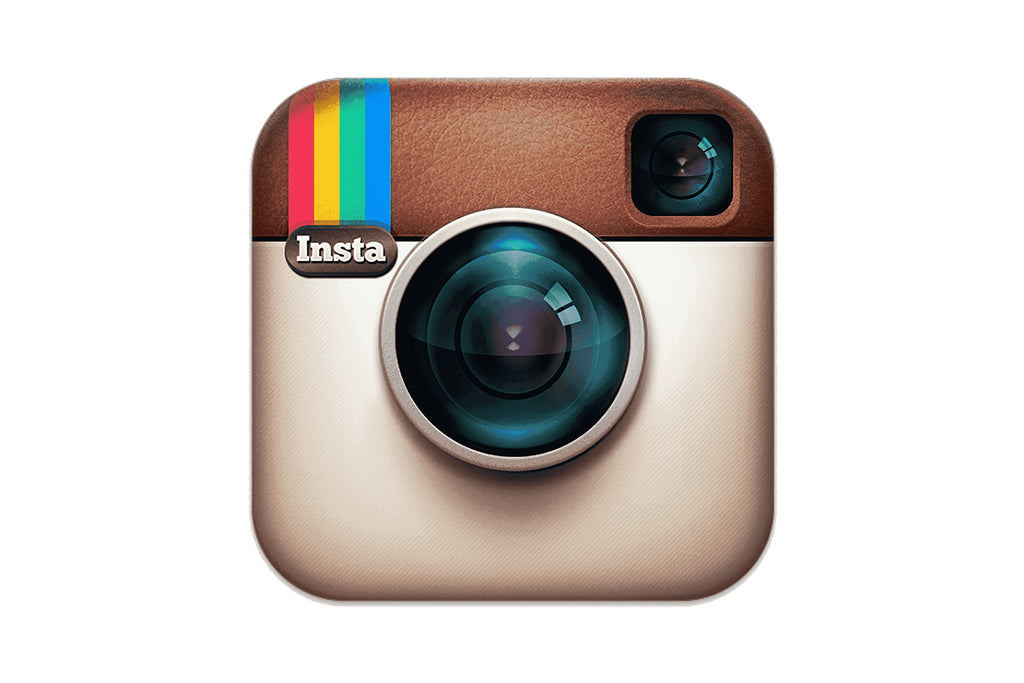
Image Courtesy: Instagram
2016 - 2022
In 2016, Instagram took a bold step forward, unveiling a new logo alongside an updated application interface. This phase in Instagram logo design marked a departure from the familiar, heralding a sleek minimalist approach that struck a chord with some and raised eyebrows with others.
While the change faced criticism from many users, the design has stood the test of time, remaining unchanged for years. Drawing on the lineage of previous Instagram badges, the new logo was redrawn in a flat and abstract manner. It featured a striking gradient orange-to-pink square with rounded angles, overlaid with a bold white camera contour.
The main shape of the camera, repeating the icon's shape, was characterized by a contoured circle in the center and a solid white dot in the upper right corner. This transformation of the Instagram logo design was not just a visual shift; it symbolized the platform's evolution, reflecting a modern, streamlined approach to social media.
For graphic designers, this version of the Instagram logo design illustrates the courage to reinvent while maintaining a connection to the past. It's a testament to the power of minimalism and abstraction in design, and a reminder that even the most controversial changes can become enduring symbols of a brand's identity.
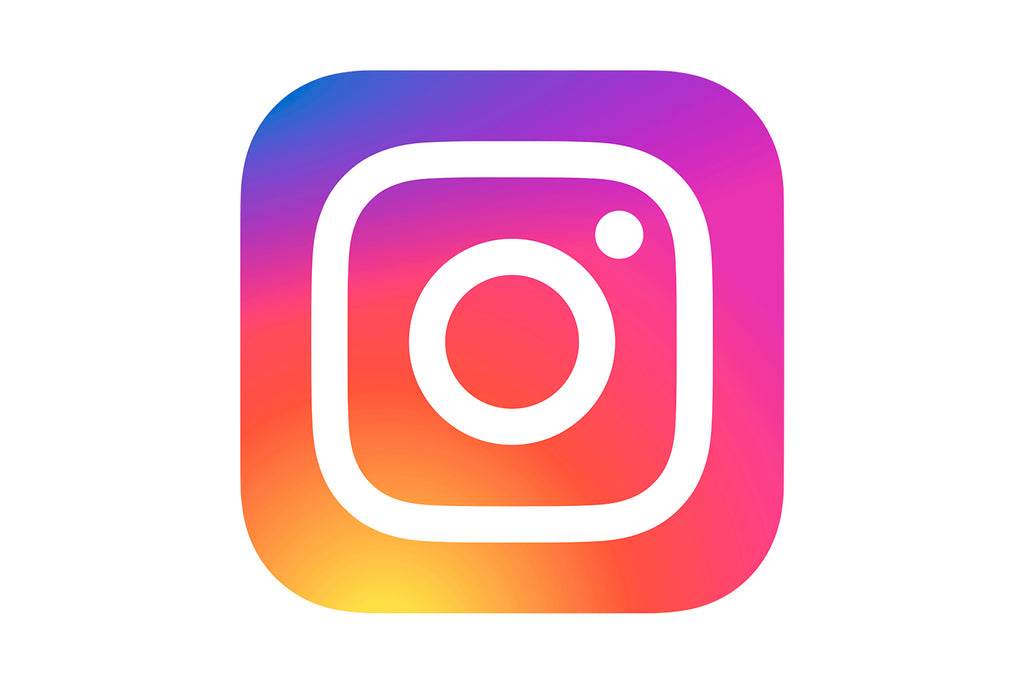
Image Courtesy: Instagram
2022 - Present
The ever-evolving world of Instagram logo design took a fresh turn in 2022 with a subtle yet significant redesign. Building on the 2016 version, this refreshed badge maintains the concept and shapes that had become synonymous with the brand but introduces refinements in color.
The new logo continues to be executed in gradients, flowing from orange to purple, yet these shades have been lightened. The result is an icon that looks even brighter and more vibrant, infusing the logo with a renewed energy that aligns with the platform's dynamic nature.
As for the main elements of the badge, they remain consistent with the previous version: the gradient background featuring a white softened square contour and a circle in the middle, along with the solid white dot in the upper right corner. This continuity in the Instagram logo design pays homage to the platform's roots while embracing the subtleties of modern design aesthetics.
For graphic designers and enthusiasts alike, the 2022 Instagram logo design offers an insightful lesson in the power of nuanced updates. It emphasizes how delicate adjustments in color and texture can breathe new life into a logo without losing its essence. It's a creative testament to the harmony between tradition and innovation that resonates at the heart of effective logo design.
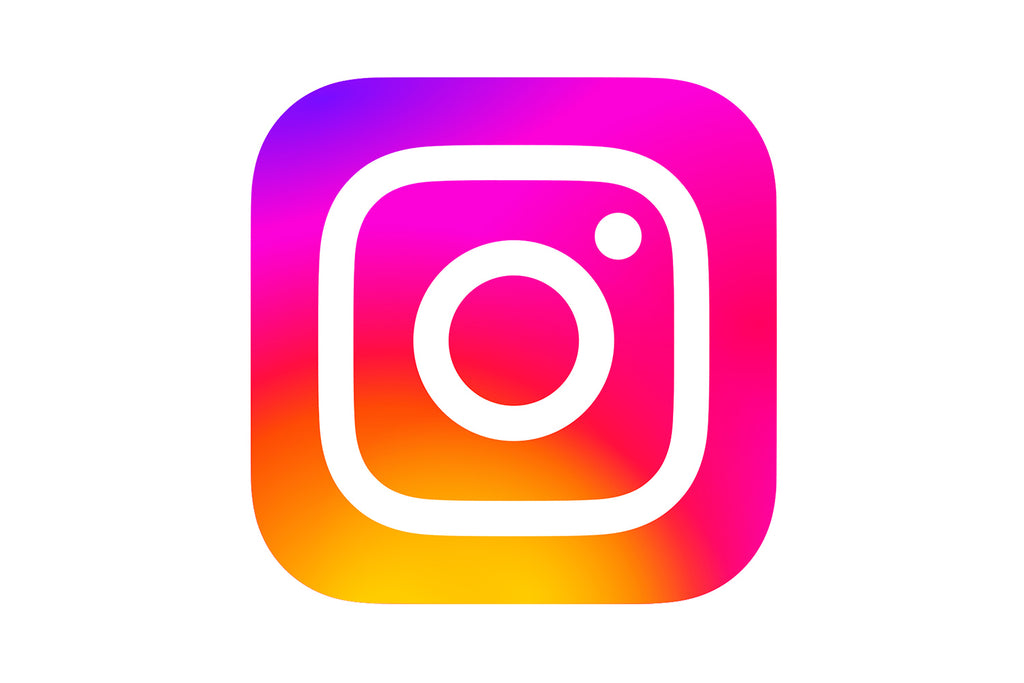
Image Courtesy: Instagram
Instagram Logotype Design History
2009 - 2010
Before it captured the hearts and screens of millions worldwide, Instagram's journey began with a different name and logotype design. In the early months of 2009-2010, the platform was called Burbn, and its visual identity was a far cry from the intricate designs that would follow.
The Burbn logotype design was simple yet distinctive, featuring the stylized name in the lowercase of a custom cursive font. The curved and rounded ends of the lines lent stability and a unique character to the logo, setting it apart without the need for embellishments.
Set in plain black against a stark white background, the Instagram Logotype design of this era was devoid of additional details, graphics, or color play. This minimalistic approach was a clear statement, focusing on the name and allowing the typography to take center stage.
For graphic designers, this initial phase of Instagram Logotype design provides a valuable insight into the power of simplicity and elegance. It serves as a reminder that sometimes, less is indeed more, and that a well-crafted typeface can communicate a brand's essence without the need for complexity. It's a glimpse into the origins of a social media giant and a testament to the profound impact of thoughtful design.
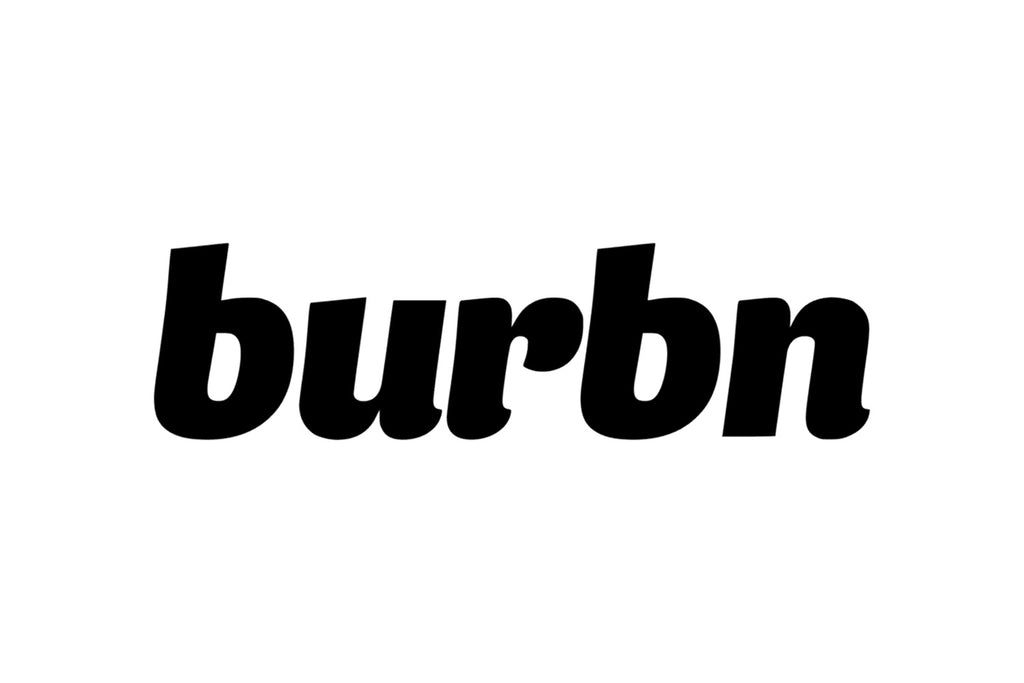
Image Courtesy: Instagram
2010 - 2013
The period from 2010 to 2013 marked a defining chapter in the Instagram Logotype design, aligning it with the platform's rapid growth and aesthetic evolution. Moving away from its initial minimalistic approach, the wordmark embraced a fancy handwritten typeface that captured the imagination of users and designers alike.
Crafted with precision, the cursive letters of the Instagram Logotype were written neatly and accurately, with elongated lines and curved tails bringing an elegant flow to the composition. This graceful design was offset by shorter bold strokes, creating a visual rhythm that was both engaging and distinctive.
Not all the symbols were connected to each other, adding an intriguing imbalance that set the logotype apart from conventional cursive scripts. On the original version, the Instagram Logotype was executed in a simple black color, grounding the expressive typeface in simplicity and allowing the form itself to shine.
For graphic designers, this phase in the Instagram Logotype design represents a rich exploration of typography, illustrating how subtle interplay between balance and imbalance can create a memorable visual identity. It's a lesson in the art of combining elegance with individuality, highlighting how even the smallest nuances in design can lead to iconic branding.
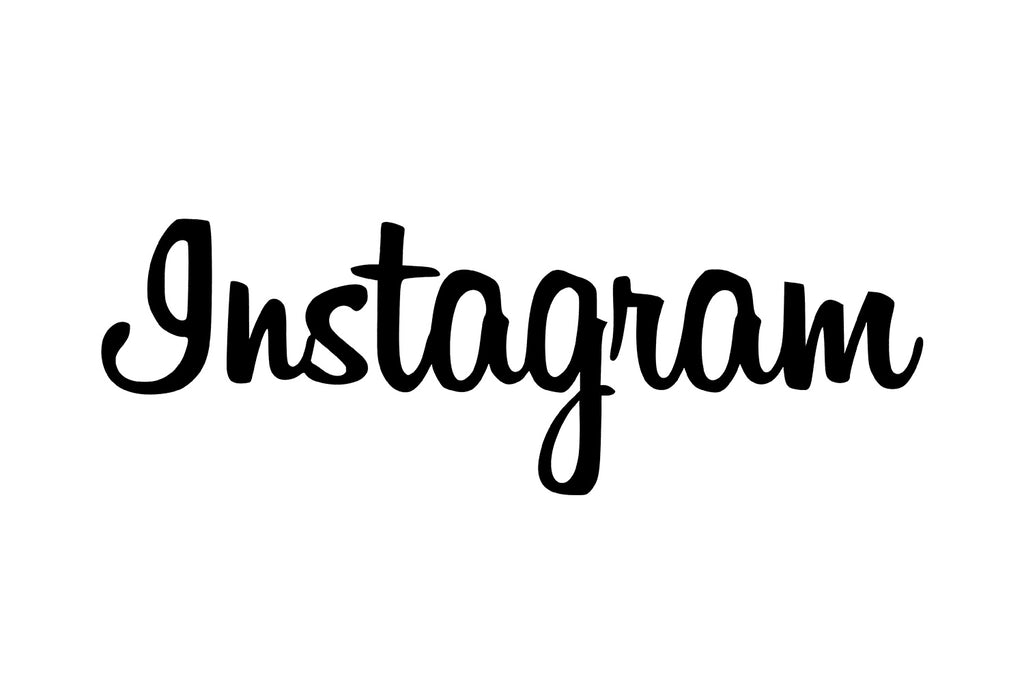
Image Courtesy: Instagram
2013 - 2015
The years 2013 to 2015 brought a significant transformation to the Instagram Logotype design, ushering in a new era of professionalism and modernity. A shift in both the color palette and the typeface marked this redesign, mirroring the platform's continuous evolution and growing influence.
The once-black lettering was replaced with a calm sea-blue shade, adding a touch of serenity to the logotype. Alongside the color change, the straightened and softened cursive lettering set the tone for a more sophisticated appearance. The inscription was now defined by bolder lines, with all letters (except for the capital one) fluidly connected to each other.
Gone were the labra's main curves (on the first "I" and the "G"), and the shortened elements gave the wordmark a streamlined look. This refined Instagram Logotype design not only looked professional but also more in tune with modern design sensibilities.
For graphic designers, this period in Instagram Logotype design provides an insightful study in refinement and brand maturity. It showcases how calculated adjustments in color and typography can translate to a renewed brand image, reflecting its growth and redefined vision. A lesson in elegance, this redesign embodies the dynamic intersection of style, function, and brand storytelling that's vital in contemporary logo creation.
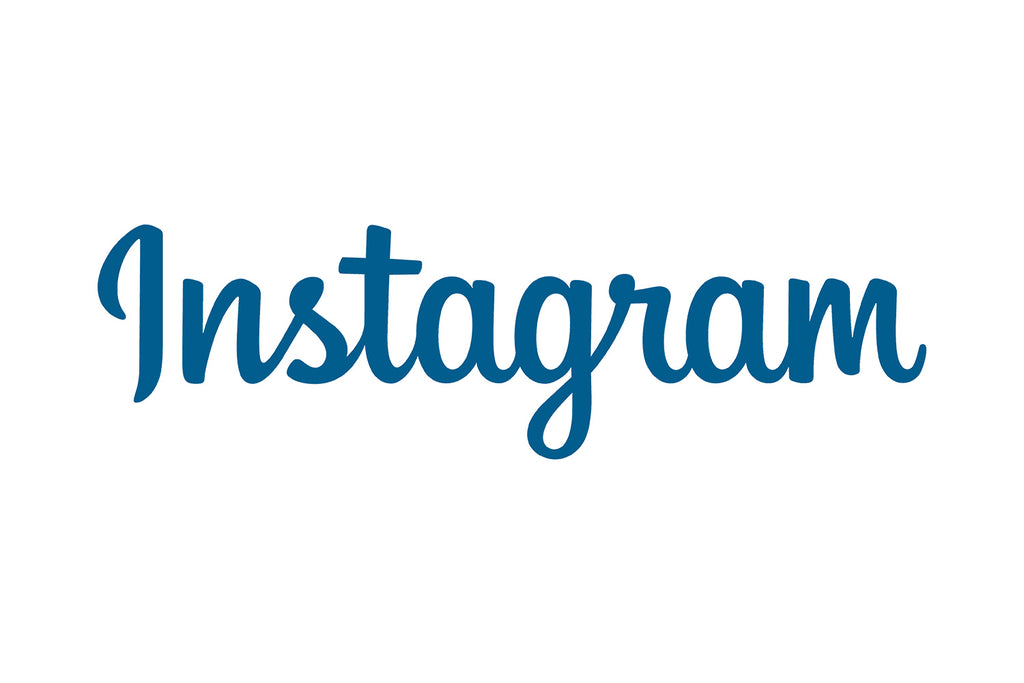
Image Courtesy: Instagram
2015 - 2016
A subtle yet impactful refinement defined the Instagram Logotype design in the transition from 2015 to 2016. While the structure and typeface remained consistent with the previous iteration, the change came through a deliberate deepening of the shade of blue.
This darker and richer blue not only infused the logotype with a newfound depth but also symbolized key brand values such as creativity, loyalty, and professionalism. Through this simple shift in color, the whole inscription started exuding a sense of confidence and chicness.
For graphic designers, the 2015 Instagram Logotype design offers a compelling case study in the power of color psychology. It demonstrates how even a slight modification in shade can dramatically alter the perception and emotional resonance of a logo, reflecting subtle changes in a brand's messaging or positioning.
The refinement in this period emphasizes the importance of color choice in logo design and how it can be leveraged to create connections with an audience. It's a reminder that thoughtful design isn't always about significant overhauls; sometimes, nuanced changes can be equally transformative. This stage in Instagram Logotype design is a testimony to the eloquence of simplicity and the art of conveying complex meanings through color.
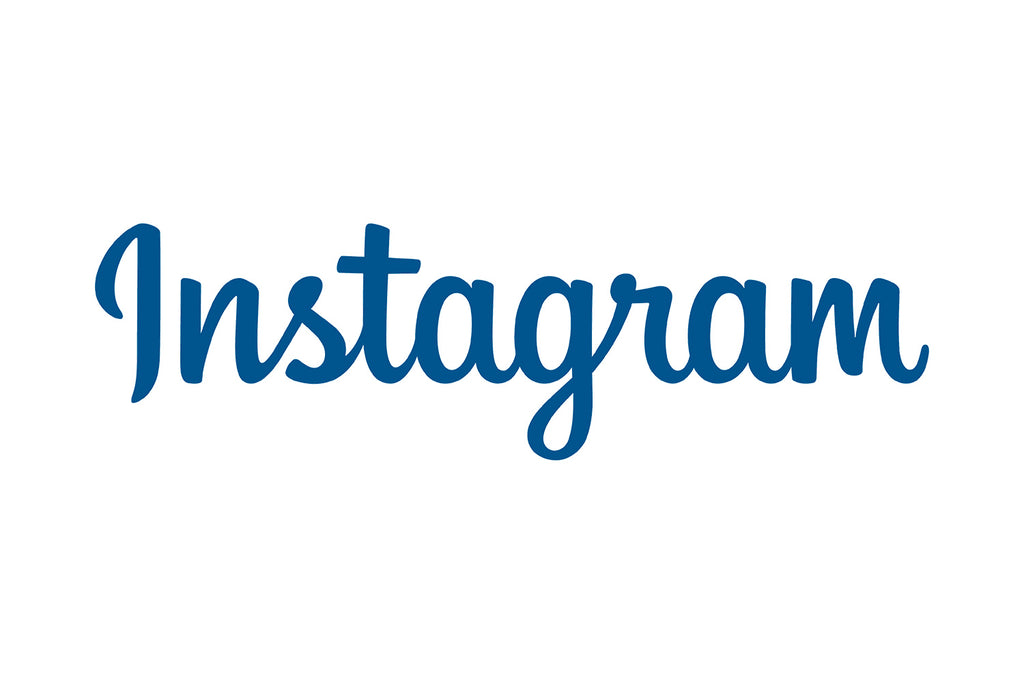
Image Courtesy: Instagram
2016 - Present
Embracing the essence of its origins, the Instagram Logotype design underwent another change in 2016. While retaining the iconic typeface that had become synonymous with the brand, the color shifted back to the original black, marking a return to a more classic and logical visual alignment with the bright gradient emblem.
The decision to revert to a monochrome inscription was not merely nostalgic; it served as a thoughtful complement to the vivid and colorful graphical part of the logo. This contrast between simplicity and vibrancy allowed the logotype to balance seamlessly within the application interface, deftly leaving all the visual accents to the photos of the users.
For graphic designers, this latest phase in Instagram Logotype design provides a significant lesson in harmonizing elements. It highlights the importance of considering the overall context of a logo, not just its standalone aesthetic. The choice to integrate a more subdued logotype against the visually rich emblem demonstrates how contrast can be used effectively to guide users' attention.
It's a reminder that great design often lies in understanding what to emphasize and what to downplay. In the case of Instagram's ongoing journey, it also showcases a respectful nod to the past while continuing to evolve and adapt to the ever-changing digital landscape.

Image Courtesy: Instagram
Analysis: Instagram Logo Design Evolution
Instagram's logo has seen several iterations since its inception, each reflecting not only the platform's own growth but also mirroring broader trends in design. This has been an exciting journey that speaks volumes about branding, creativity, and understanding an ever-changing audience. In the following analysis, we'll explore the Instagram logo design evolution, examining key aspects that can offer insights and inspiration for graphic designers.
From Complexity to Minimalism
The initial Instagram logo designs were detailed, featuring Polaroid-inspired imagery that connected directly to the app's photographic focus. Over time, the designs became more abstract, culminating in a sleek and minimalist approach. This shift reflects a global trend toward clean lines and uncluttered visuals. For graphic designers, it's a reminder that simplicity can often convey a message more powerfully and memorably.
Color Psychology at Play
The use of color in the Instagram logo design has been carefully orchestrated. From the original milky shades to the bright gradient emblem in recent years, color has been used to symbolize creativity, loyalty, and professionalism. The intelligent use of color helps connect emotionally with the user base and is a crucial tool for any designer.
Consistency and Brand Recognition
Despite several changes, Instagram maintained certain elements in its logo design to ensure brand recognition. Whether it's the color scheme or the iconic camera shape, the logo has evolved while keeping a core identity intact. This highlights the importance of finding the right balance between innovation and brand consistency.
Harmonizing with Content
Instagram's logo design has always considered the context of its platform. The latest iterations, especially, have been crafted to leave visual accents to user-generated content, like photos and videos. It underscores the importance of a logo's interaction with other content elements, an aspect that's often overlooked but is vital in creating a cohesive user experience.
Reflective of Technology and Trends
The Instagram logo design evolution is also a reflection of technological advancements and design trends. From embracing 3D effects and textures to the flat and abstract design, Instagram has been in tune with the design zeitgeist. It emphasizes the need for designers to stay updated and be able to adapt to new styles and technologies.
The Instagram logo design evolution offers a rich study in branding, design philosophy, and the subtleties of visual communication. It illustrates the importance of understanding the target audience, staying true to the brand's core values, and being adaptable in a rapidly changing digital landscape. For graphic designers, it's a roadmap, a source of inspiration, and a lesson in how timeless design can be crafted with ingenuity and thoughtful consideration.

The Philosophy & Meaning Behind Instagram Logo Design
The evolution of the Instagram logo design is not just a series of aesthetic changes. It's a deeply thought-out process that carries philosophy, meaning, and a connection to the platform's core values. For those of us immersed in the world of graphic design, unraveling the layers behind the Instagram logo design can provide valuable insights. Let's take a closer look at what the logo symbolizes and why it stands out in the crowded world of social media branding.
Embracing the Platform's Essence
Instagram's original logo, inspired by a retro camera, paid homage to the platform's primary function of photo sharing. The Instagram logo design embraced the very essence of photography, from nostalgic Polaroid cameras to more abstract modern representations, aligning itself with the creative community it served.
Symbolism Through Color
The progression of color throughout the Instagram logo design evolution is no accident. The early beige and brown shades invoked a vintage feeling, while the later gradient from orange to purple represents a broader spectrum and inclusivity. It's a masterclass in using color symbolism to convey emotion and values.
A Journey from Retro to Modernity
The Instagram logo design journey is a narrative from retro to modernity. The original designs' vintage aesthetics transitioned to sleek and abstract shapes, mirroring Instagram's growth from a simple photo-sharing app to a multifaceted social platform. This seamless transition shows the power of design in telling a brand's story.
Minimalism with Meaning
The move towards minimalism in the Instagram logo design was not just a trend-following decision. The logo's simplification mirrored the user interface's refinement and made a statement about the platform's maturity. For graphic designers, it underscores the importance of aligning design changes with broader strategic goals.
Unifying Diversity
The Instagram logo design's latest iterations, particularly the colorful gradient, can be seen as a symbol of diversity and unity. It's reflective of the platform's global community, embracing various cultures, ideas, and creativity. The design serves as a visual metaphor for the diverse voices that find a home on Instagram.
Understanding the philosophy and meaning behind the Instagram logo design is not just an academic exercise. It offers graphic designers a glimpse into the meticulous process of crafting a symbol that transcends mere aesthetics. The Instagram logo is a narrative, a statement, and an embodiment of the brand's mission and values. It's a reminder that great design speaks, resonates, and evolves, and there's always something profound beneath the surface. Whether you're a seasoned designer or just starting, the lessons gleaned from the Instagram logo design journey can ignite inspiration and deepen your approach to visual storytelling.

What Can We Learn from Instagram Logo Design
The evolution of the Instagram logo design is not just a visual journey; it's a roadmap filled with lessons for graphic designers, regardless of their level of experience. Understanding the why behind the what opens a treasure chest of insights that can guide and inspire our own creative processes. So, what can we learn from the Instagram logo design? Let's explore these lessons in detail.
Adaptation to Change
The Instagram logo design demonstrates a mastery of adapting to the changing landscape. From its initial retro-themed design to the modern, sleek emblem, the brand was unafraid to evolve. For graphic designers, this stresses the importance of staying relevant, dynamic, and open to change without losing the core brand identity.
Power of Simplicity
The transition to a more minimalistic logo in recent years showcases the power of simplicity. This Instagram logo design lesson underscores that sometimes, less is more. Stripping down to the essential elements can create a more memorable and impactful visual without overcomplicating the message.
Emotional Connection Through Color
Instagram's color choices were never arbitrary. Each color shift was thoughtfully selected to evoke specific emotions and align with the platform's direction. This teaches us the significance of color psychology in design and how it can be harnessed to create a deeper connection with the audience.
Cohesiveness Across Multiple Elements
Whether it's the visual emblem or the typographic element of the logo, Instagram ensures cohesiveness across all aspects of its design. The Instagram logo design is a reminder to keep consistency across different elements of a brand, including color, typography, and imagery, to form a unified and recognizable identity.
Reflecting Core Values and Mission
Every iteration of the Instagram logo design reflects the platform's core values and mission. The design choices are not only aesthetically pleasing but also purposeful, conveying the platform's essence. This teaches us the critical importance of aligning design with a brand's values, mission, and the needs of its target audience.
The Instagram logo design is not merely a succession of stylish updates; it's a living example of strategic design thinking. From embracing change and simplicity to skillfully using color and maintaining a cohesive brand, the lessons are rich and multidimensional. As graphic designers, taking these insights to heart can enrich our own creative practices, making us not just creators of pretty visuals, but strategic storytellers. By dissecting and understanding the thought process behind the Instagram logo design, we can find inspiration and guidance for our own creative journey, crafting designs that resonate, communicate, and endure.
Conclusion
The journey through Instagram logo design has revealed a fascinating evolution that's more than just visual aesthetics. It's a chronicle filled with lessons on adaptability, simplicity, color psychology, cohesiveness, and brand alignment. As graphic designers, we can draw inspiration from these insights to infuse our own creations with meaning and purpose. In the ever-changing landscape of design, embracing the principles behind the Instagram logo design can guide us toward crafting visuals that not only look good but also resonate deeply with our audience. It's a valuable roadmap for any designer looking to excel in the modern design world.
Let Us Know What You Think!
These fantastic logo design articles are written and curated by Kreafolk's team. We hope you enjoy our information and remember to leave us a comment below. Cheers!
















Leave a Comment